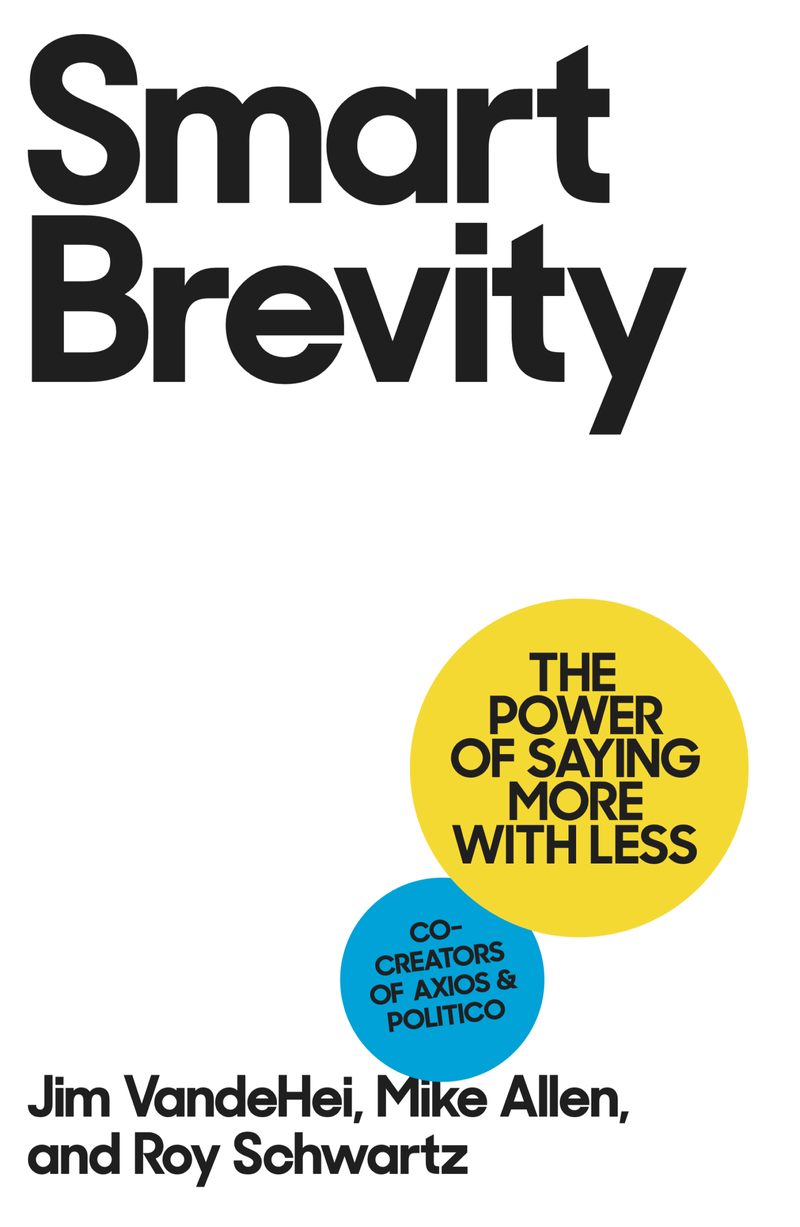
Book Review: Smart Brevity: The Power of Saying More with Less by Jim VandeHei, Mike Allen, and Roy Schwartz
If you want to snag busy readers who skim more than dive, write short and smart.
That's the core message of Smart Brevity: The Power of Saying More with Less by Jim VandeHei, Mike Allen, and Roy Schwartz (Workman Publishing Company, 2022).
Why it matters: If you write long, readers will skip it. Why waste time writing words that no one will read?
As VandeHei, Allen, and Schwartz write,
"Adapt to how people consume content—not how you wish they did or they did once upon a time."
They explain that people have always been prone to distraction—and today, given our technology and media, distraction is the air we breathe. Slice through the noise by writing briefly.
(Read: How Reading Books Can Help You Reclaim Your Attention)
Dig deeper: Why Smart Brevity is worth your attention
True to its name and mission, this was a short book that succinctly explains the Smart Brevity writing method. Well-organized, the book breaks down each step in the Smart Brevity method (more on that below), showing specific examples and why the step matters. Later chapters demonstrate applications: articles, email, newsletters, meetings, presentations. Actionable tips pepper every chapter.
The highlight: Practical examples galore of how wordy, unclear writing can be trimmed and pepped.
The cheatsheet in the back sums up the main principles:
- Be the expert, or find one
- Stay short, not shallow
- Write like you speak
- Style text for impact
True to #4, the authors use copious headings, subheadings, and bullet points to divide up every potential wall of text into something skimmable. Every chapter included "axioms" that called out information: Why it matters. The big picture. The bottom line.
I found the use of bullet points as styling interesting because they were used for spacing—to call out a point visually—rather than for displaying lists.
Some of the advice is merely good writing. For instance: lose extra words and modifiers in favor of strong, vivid words. Use concrete, short words in place of abstract, weak words. Tell readers up front why reading this is worth their time—especially for online articles and news.
(Read: How I Manage Deadlines: 5 Ways to Keep Projects On Track)
What is the Smart Brevity method?
The method has four steps.
- Tease: 6 words or less, headline or starter. Catch your reader's attention.
- Lede: 1 strong opening sentence, new, direct, sharp. Your only chance to snag your reader.
- Context/punchline: Why it matters. You've said what's new, now explain why your reader should care and how they should think about the information.
- Dig deeper: The reader can choose to learn more by reading further, or not.
As VandeHei, Allen, and Schwartz write,
"[Y]ou'll discover that the easiest way to get across what you're trying to say is… just say it. Then stop."
Think about your audience first: what do they want or need? Focus on what they want to hear, not on what you want to say. Single out one person in your audience and tailor your message to them. Don't dumb things down. Junk the filler.
Narrow down your message. What's the one thing you want your audience to remember?
What's the best use of Smart Brevity?
Hands down, emails and meetings. I was reminded of this article about writing to-the-point emails that reduce email overload. Everyone would save time and frustration by applying this method to email and meetings.
I'm less convinced that the Smart Brevity style is necessary elsewhere. It has a clickbait vibe. I can certainly see its uses for news and other informational articles—by making it clear up front what the message is, why that message matters, and how to learn more—but I also wonder at what is lost from our written communication when the terse set of facts is all we get.
There was no beauty in this book, only efficiency.
Blogs, for instance, are an unusual genre in that they can fit neatly alongside news and information-sharing articles, but can also be at home among long-form musings and memoir. I once heard it suggested that bloggers are the modern essayists. Essays are a different form of writing than your typical online article, perhaps consumed by a different audience, for different reasons.
Smart Brevity shouldn't be unfurled without thought to the purpose of the writing.
(Read my review of Good Prose: The Art of Nonfiction by Tracy Kidder and Richard Todd)
Should you read Smart Brevity?
Does your work involve email? This book is for you. Read it if you want to write smarter for a busy audience. The practical tips and examples will inspire you. As the authors state,
"[Smart Brevity] is a system and strategy for thinking more sharply, communicating more crisply and saving yourself and others time. It guides you into saying a lot more with a lot less—and that is its greatest power."

How to Be More Creative
